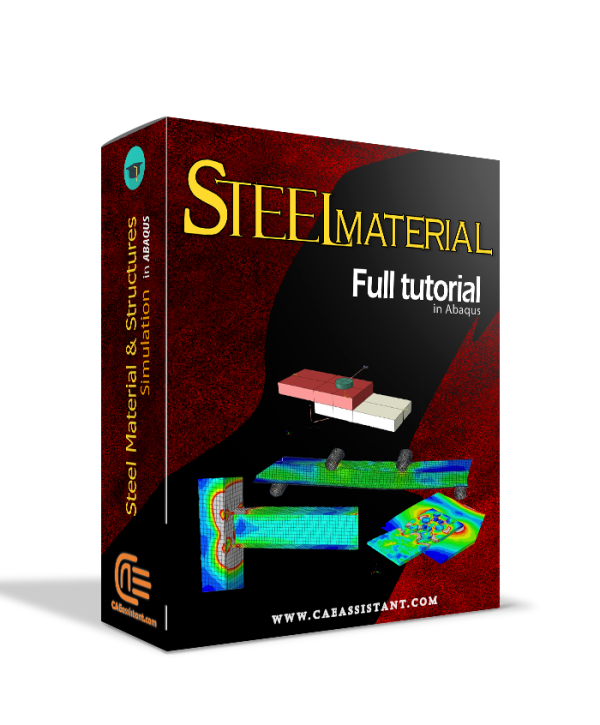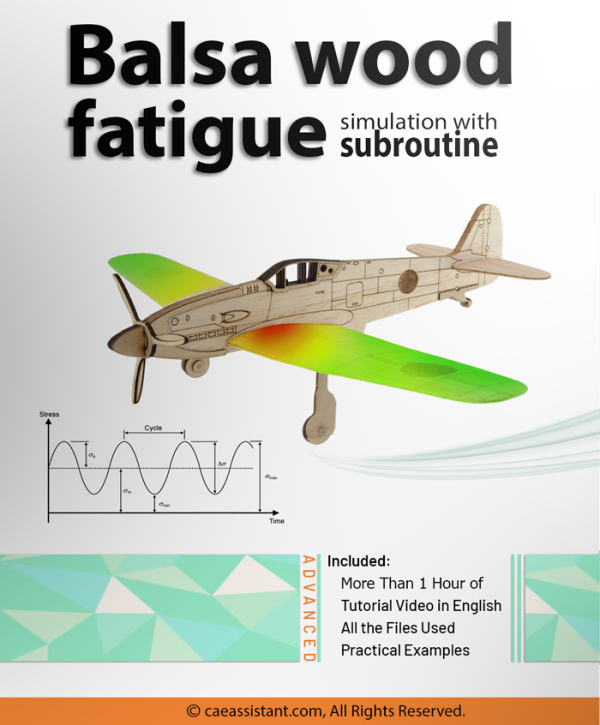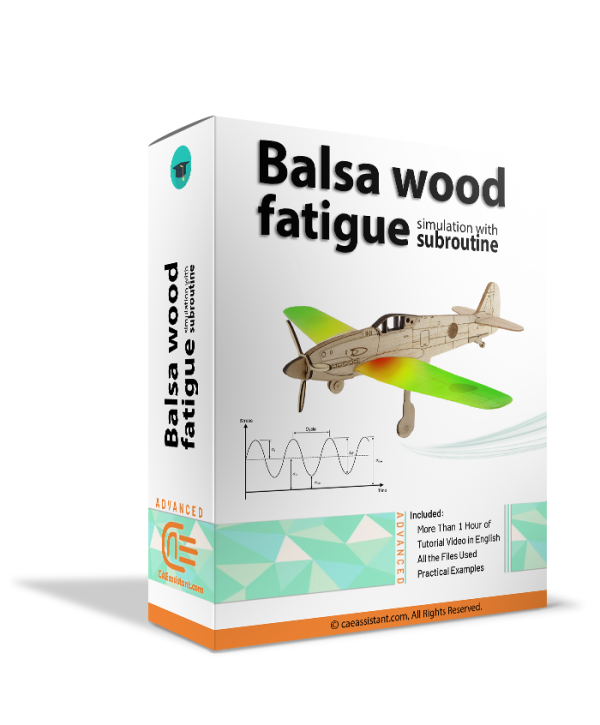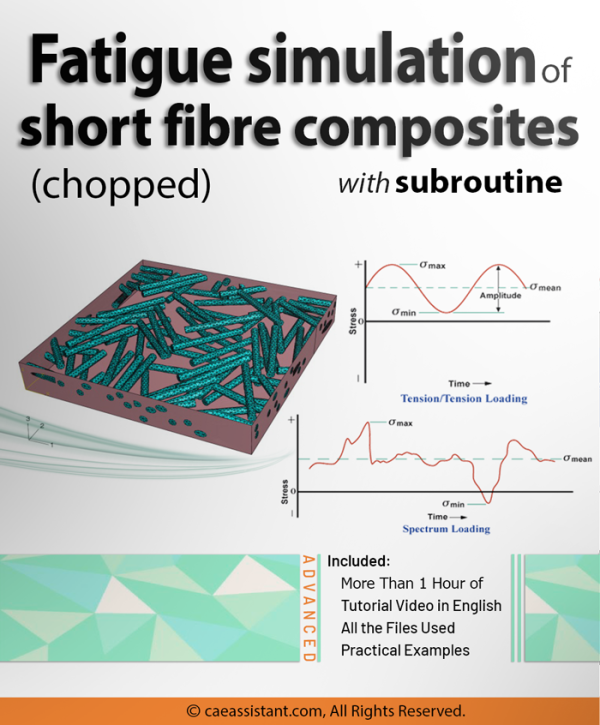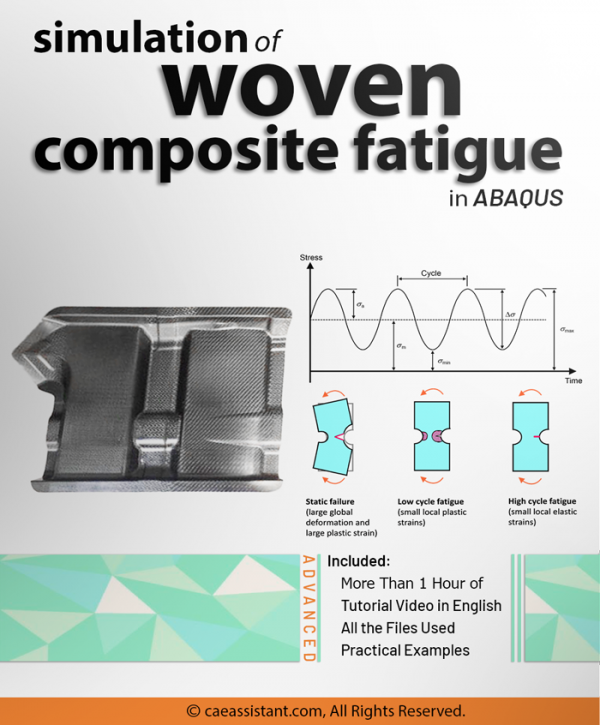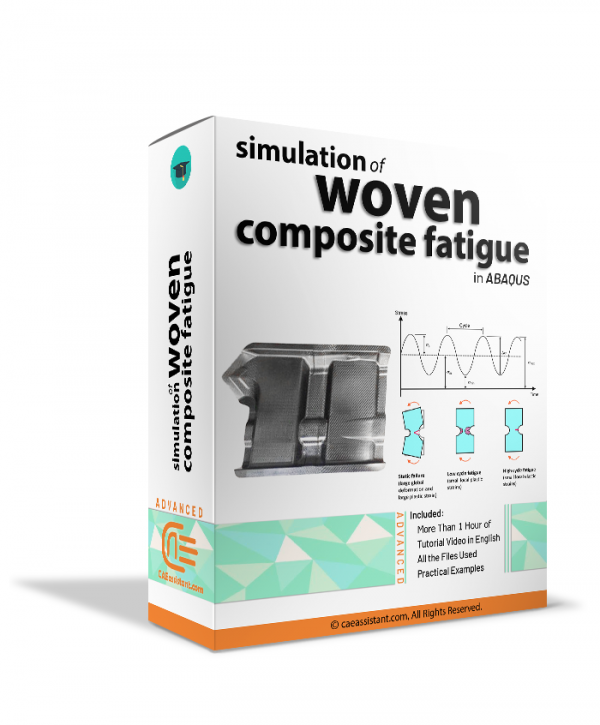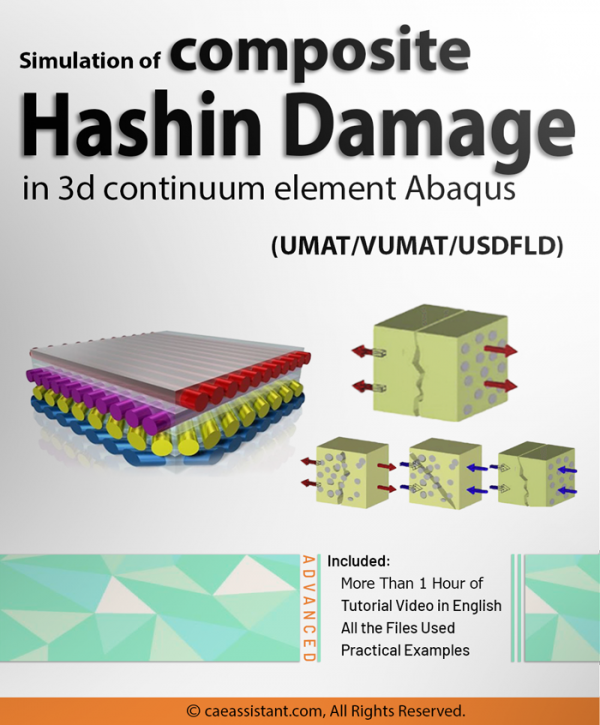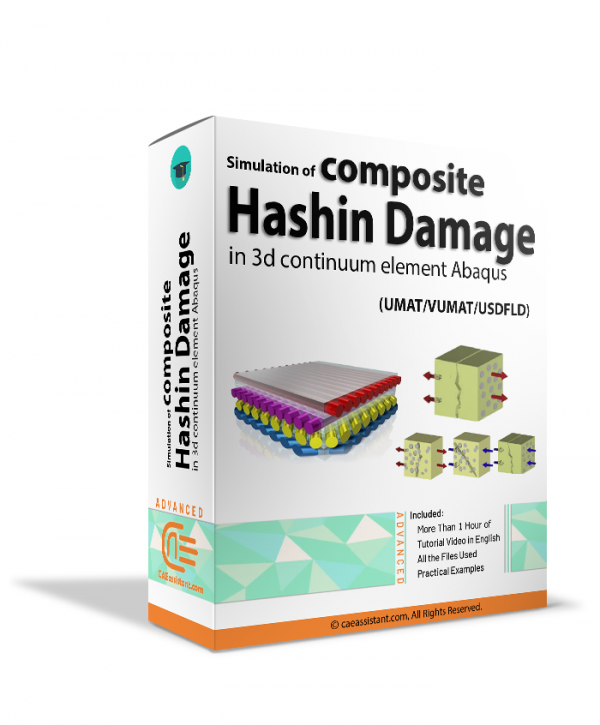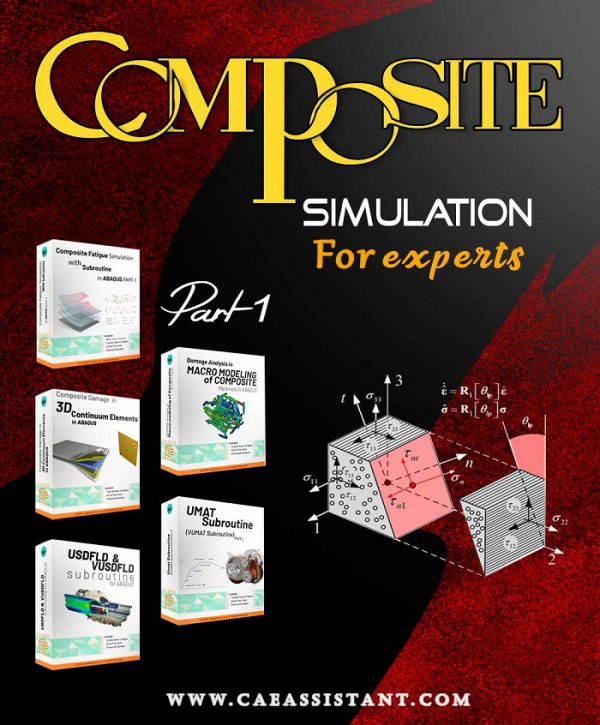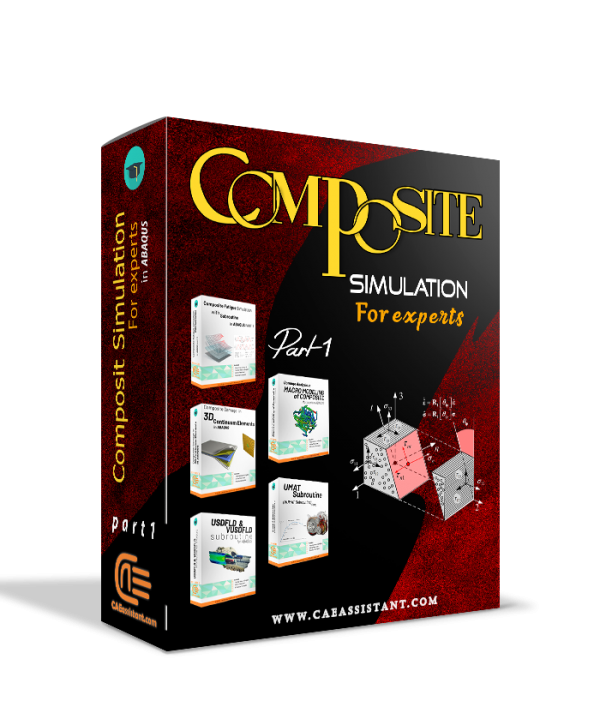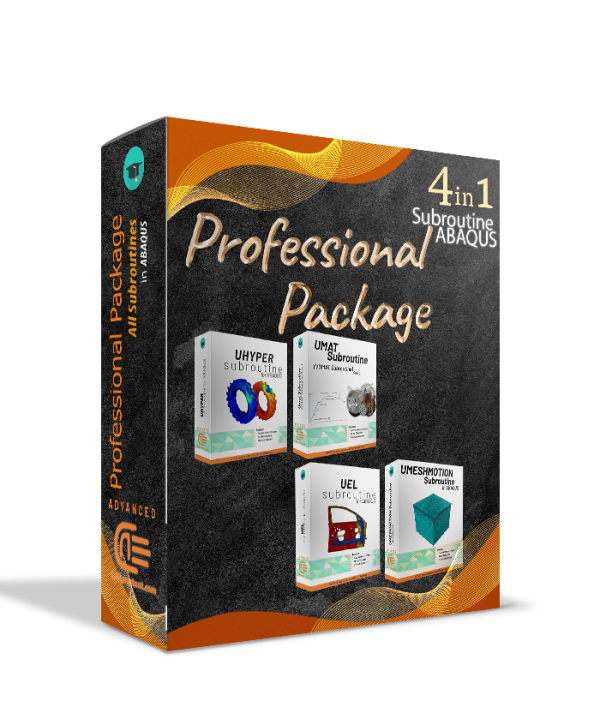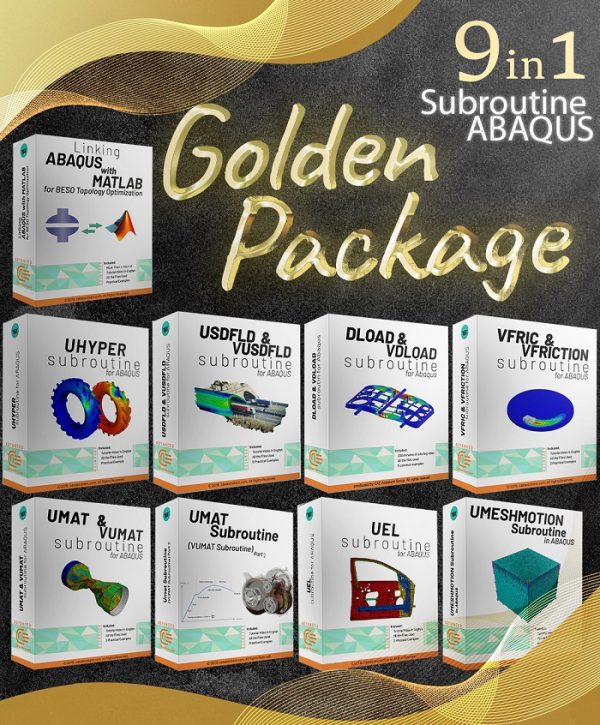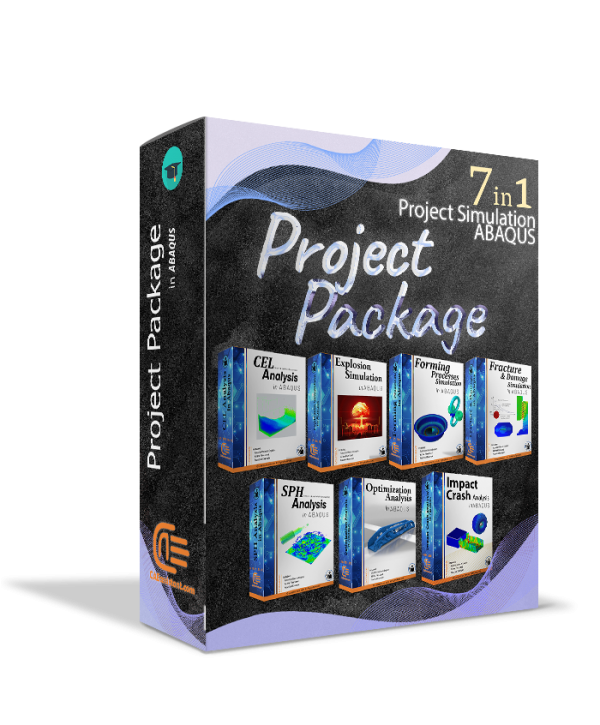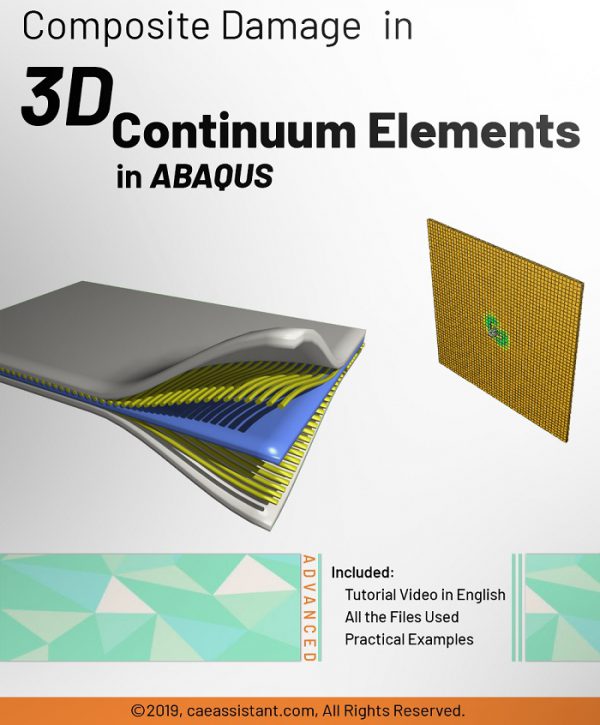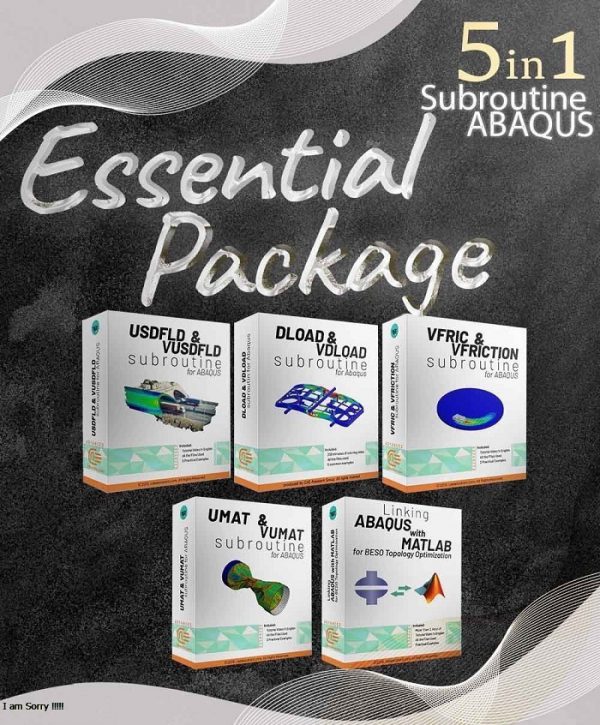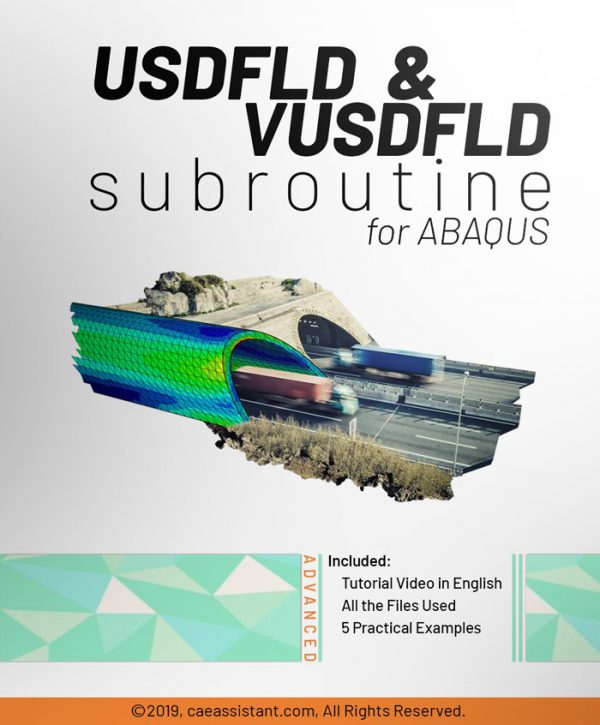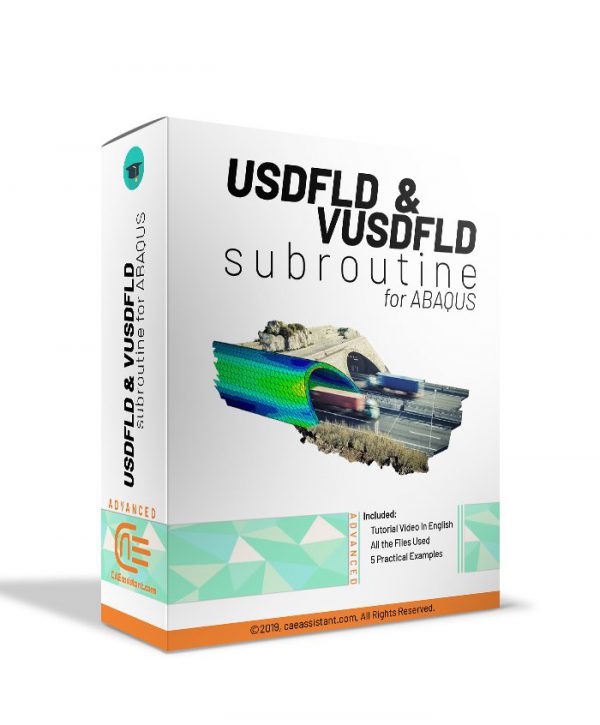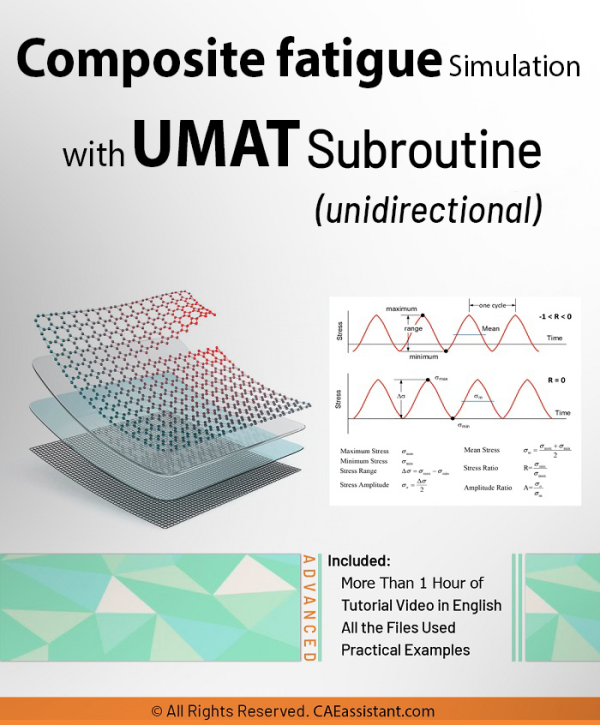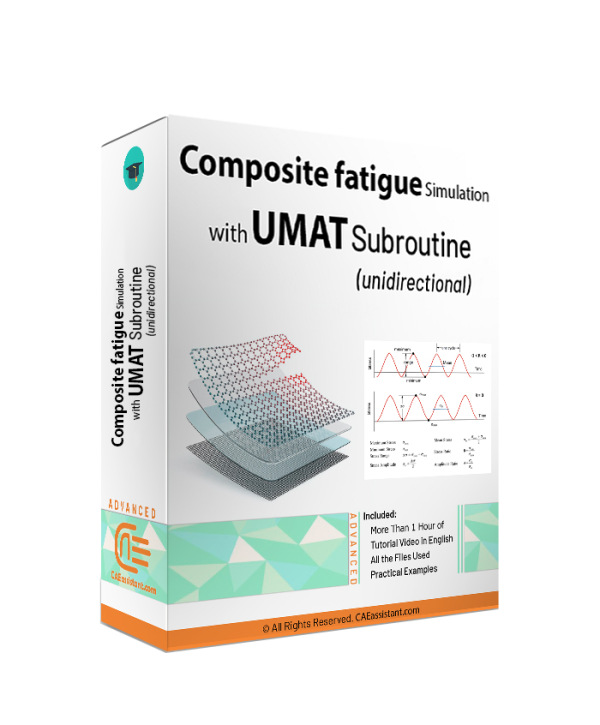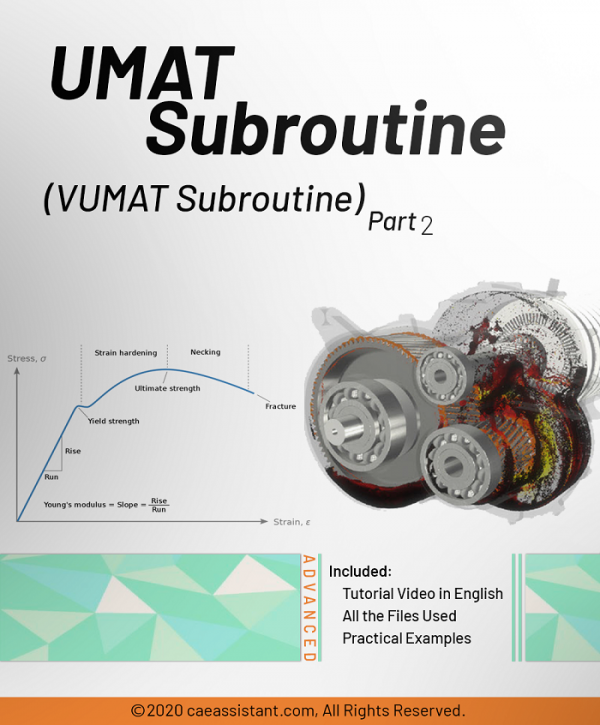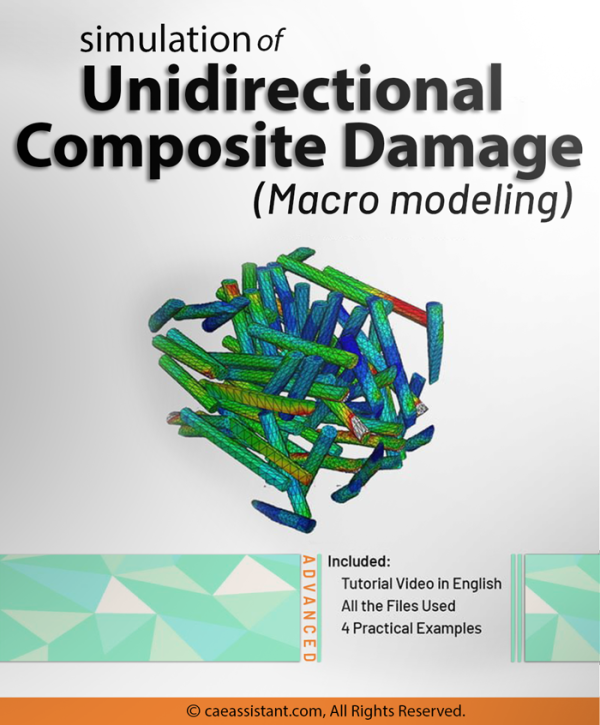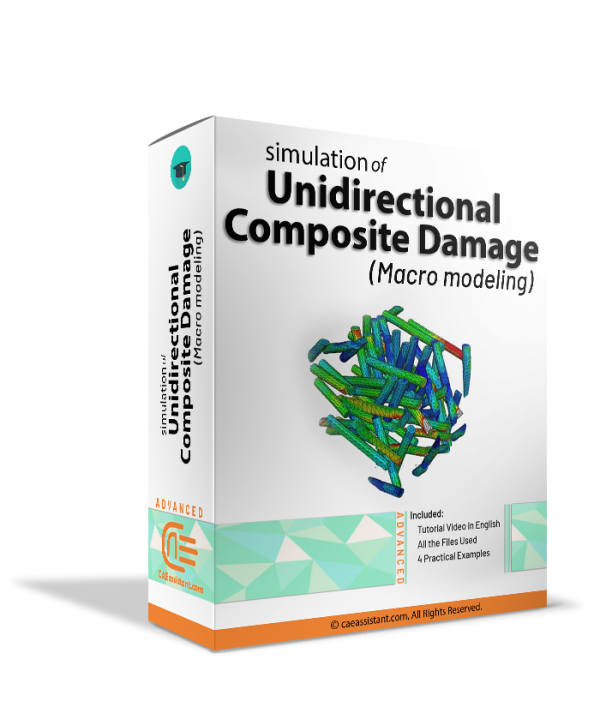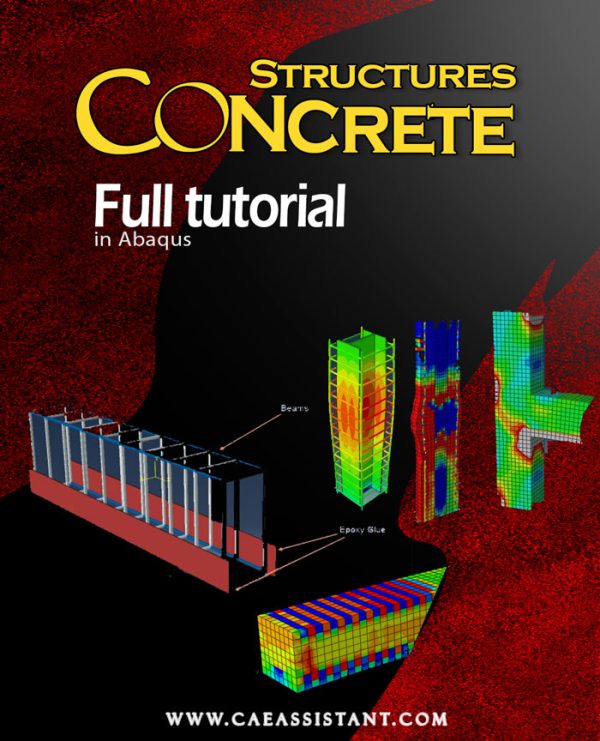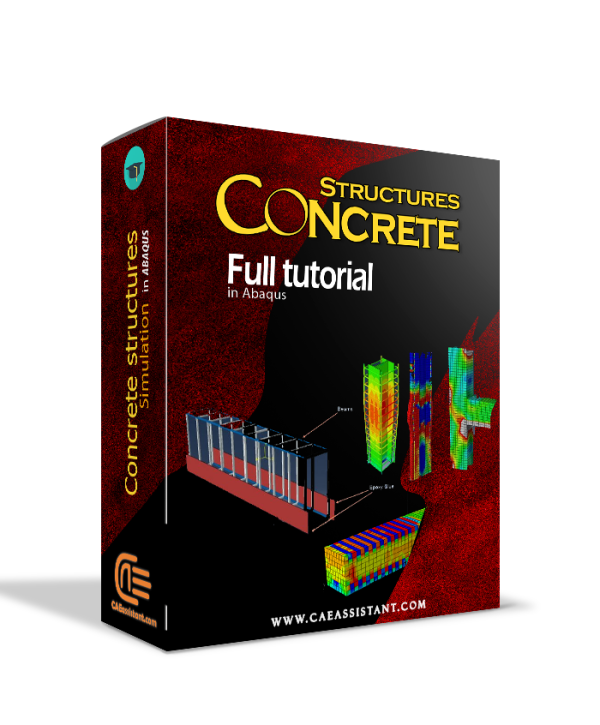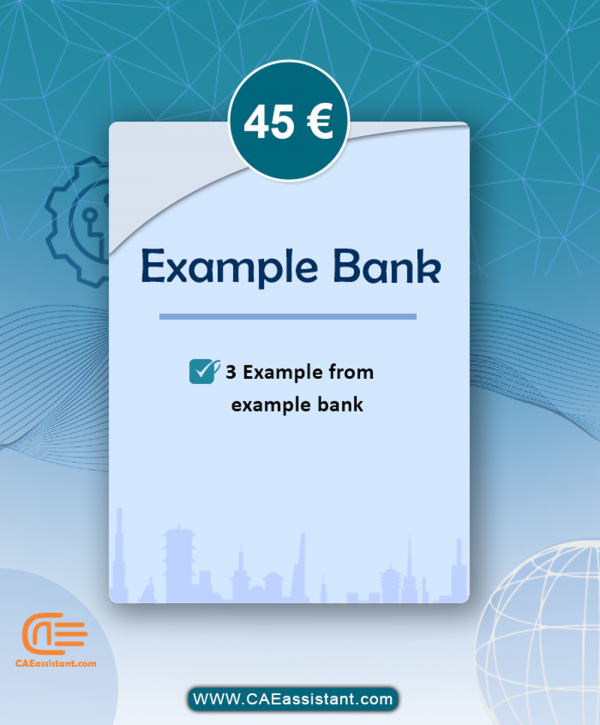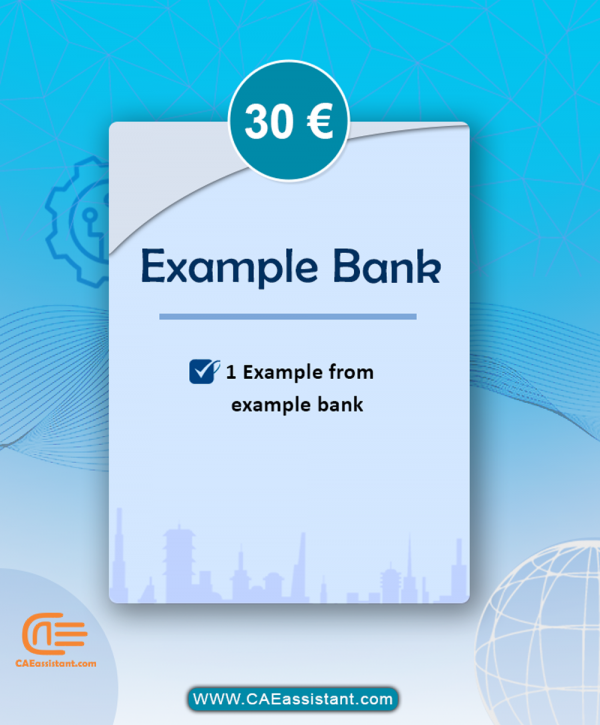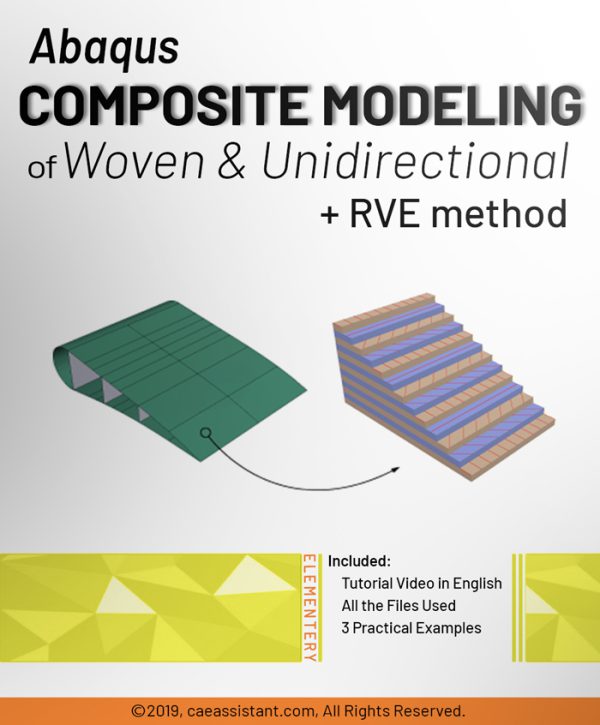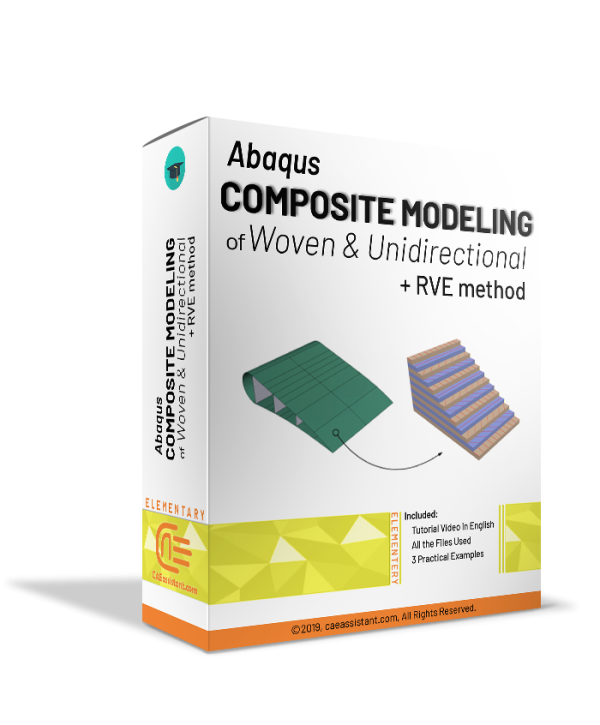Composite
Abaqus steel material and structures Full Tutorial
Here in this training package, numerous models of crack steel material structures modeling, such as the shear failure, FLD criterion and different metal damage theories in concrete, steel, dams, and bones are examined through ten step-by-step tutorials. Every tutorial includes all needed files and step-by-step English videos and is explained from A to Z.
Balsa wood fatigue simulation with Abaqus subroutine
This training package focus on writing subroutines to simulate wood fatigue in Abaqus. In the "Balsa wood fatigue simulation with subroutine" package, the used fatigue theory of wood has been described. Then, the flowchart of the subroutine and writing subroutine line-by-line is explained. It helps users to develop the subroutine based on customized theory. Finally, the subroutine is implemented on the Abaqus model, and the results are discussed.
Fatigue damage simulation of short fibre composites with subroutine
Fatigue failure in materials occurs when repetitive or fluctuating stresses, below the ultimate strength and often below the yield limit, lead to sudden and unpredictable failure, making it a significant concern in engineering due to its potential for catastrophic consequences. The reinforced part of the fiber-reinforced composites can be categorized as continuous or discontinuous, with the latter referred to as short fiber-reinforced composites. In this training package, the fatigue of short (chopped) fiber composites is explained. Two fatigue damage models are presented for short fiber composites: Nouri fatigue damage model and Avanzini fatigue damage model. The Nouri’s model is applicable for composites with orthotropic behavior. But the Avanzini’s model has considered the fiber distribution in the matrix to be homogeneous and random. It has assumed the material behavior to be isotropic. Also, Nouri's model was developed for strain-controlled test, but Avanzini's model was developed for stress-controlled test. In this tutorial, we use the Avanzini’s model, which is base on this article: “Fatigue behavior and cyclic damage of peek short fiber reinforced composites”. This article has implemented the USDFLD subroutine, but we use the UMAT subroutine, which is more accurate than USDFLD since the material strength and properties reduction is smooth. A standard test specimen is used in this simulation to model such behavior. You will learn the details in the package.
Simulation of woven composite fatigue in Abaqus
The training package focuses on simulating woven composite fatigue using Abaqus software and the modified Hashin fatigue damage model based on the article titled "Life prediction of woven CFRP structure subject to static and fatigue loading ". Woven composites have high strength and stiffness-to-weight ratios, but the interlacing pattern can affect stress distribution and damage mechanisms, making fatigue analysis crucial. The package includes four lessons covering different types of composite fatigue models, material characterization, generalization of the failure model, and the implementation of the UMAT subroutine. Two workshops provide hands-on experience in implementing the UMAT subroutine on one element in cyclic tension and a complex model. Fatigue analysis predicts material behavior under cyclic loading and helps design safe and reliable structures.
Simulation of composite Hashin damage in 3d continuum element in Abaqus (UMAT-VUMAT-USDFLD)
In this training package, the 3D continuum HASHIN damage initiation model is prepared via three subroutines (USDFLD, UMAT and VUMAT).This training package teach you subroutines line-by-line. It should be noted that after damage initiation, failure occurs suddenly and in the form of a reduction in properties in the model. The HASHIN theory for this package is based on Kermanidis article titled” FINITE ELEMENT MODELING OF DAMAGE ACCUMULATION IN BOLTED COMPOSITE JOINTS UNDER INCREMENTAL TENSILE LOADING “.
Academic or Business Membership
Payment Yearly
Why should you choose this Membership?
Composite simulation for experts-Part-1
If you are a graduate or Ph.D. student, if you are a university professor or an expert engineer in the industry who deals with simulation software, you are definitely familiar with the limitations of this software in defining the material properties, loading or meshing, interaction properties, and etc. You have certainly tried to define the properties of materials based on advanced fracture theories in finite element software and are familiar with their limitations and problems.
Now, here is your solution. Start writing subroutines in finite element software and overcome the limitations. With the tutorials in the Golden Package, you will learn how to write 8 subroutines in Abaqus software professionally.
Professional Package
As a professional Abaqus user, you have probably faced cases where you have to move meshes and elements during analysis. For example, there is such a need in the wearing process. In addition, to define the properties of materials based on advanced theories of elasticity or plasticity, you need programming within the software. Sometimes you may need to model different types of cohesive or many types of composite materials based on various methods of composite damage. In all these cases, be sure that the professional package will answer you. This package is designed and prepared for you who are professionals and work on the edge of knowledge topics in the field of mechanical engineering and damage mechanics.
Sometimes you may need to use user-defined elements and change element configuration based on theories that you are using; for instance, it is needed to add more integration points in elements. In this case, you can use the UEL package in the “Professional Package”.
Golden Package
If you are a graduate or Ph.D. student, if you are a university professor or an expert engineer in the industry who deals with simulation software, you are definitely familiar with the limitations of this software in defining the material properties, loading or meshing, interaction properties, and etc. You have certainly tried to define the properties of materials based on advanced fracture theories in finite element software and are familiar with their limitations and problems.
Now, here is your solution. Start writing subroutines in finite element software and overcome the limitations. With the tutorials in the Golden Package, you will learn how to write 8 subroutines in Abaqus software professionally.
ABAQUS Projects Package
If you need common industrial simulations in the fields of forming, fracture, explosion, impact, etc., this package can provide you with comprehensive training along with an instructional video file and software file. You can quickly meet your educational needs in learning the elementary and intermediate level of Abaqus software using this package.
3D continuum Abaqus HASHIN progressive Damage for composite materials (VUMAT Subroutine)
This tutorial teaches how to simulate damage in 3d continuum composite materials in ABAQUS. As you know, Abaqus does not have any material model for 3d composite materials. So, the user needs to write a customized subroutine to simulate damage initiation and progressive damage for composite materials in ABAQUS. In this package, one of the most practical damage initiation criteria (Hashin) is used to detect failure. It should be mentioned that this subroutine includes gradual progressive damage based on the energy method. This complex subroutine could be used for static and dynamic problems.
Essential Package
In this package, you can get comprehensive training of the following very useful four subroutines at a lower cost. In this package, more than 9 hours of practical training in the form of videos, PowerPoint, and workshops are provided.
During the years of our activities, many students and professors have received these 5 practical packages from us, and we decided to offer this popular package in the form of the “Essential Package” at a reasonable price.
We assure you that by providing this package, you will be answered to how to define the properties of complex materials or complex loads and contacts very quickly and will save you a lot of time. Because in the training workshops of these packages, there are several practical examples for using these subroutines that can make you a professional in writing them quickly.
Introduction to USDFLD and VUSDFLD Subroutine
In this usable tutorial, the material properties can change to an arbitrary dependent variable. One of the most important advantages of this subroutine is simplicity and applicability. Various and high usage examples are unique characteristics of the training package.
This training package includes 5 workshops that help you to fully learn how to use USDFLD and VUSDFLD subroutines in Abaqus software. By means of these subroutines, you will have expertise redefine field variables at a material point by the solution dependence of standard and explicit, respectively.Composite Fatigue Simulation with UMAT Subroutine in ABAQUS (unidirectional)
The composite fatigue training package completely teaches how to simulate and analyze a fatigue composite model with the help of UMAT Subroutine in Abaqus software. In this training package, we have provided all the files needed for your training, including articles, theories, how to write subroutines, and software settings.
Advanced UMAT Subroutine (VUMAT Subroutine) – Abaqus UMAT tutorial
This training package helps Abaqus users to prepare complex UMAT and VUMAT subroutines. This Abaqus UMAT tutorial package is suitable for those who are familiar with subroutine or want to learn UMAT/VUMAT subroutine Professionally. Equations for computational plasticity based on kinematic stiffness are also discussed. In addition, metal damage has been implemented based on Johnson Cook's model.
Watch Demo
Customized Package
Simulation of Unidirectional Composite Damage in ABAQUS
This package is about Unidirectional Composite Damage tutorial and applies various theories to initiate and progress damage in composite materials based on ABAQUS capabilities for different elements. As you know, according to the modeling done by the micro or macro method, the way of defining the Abaqus composite damage completely follows the separate method in ABAQUS. This training package is customized for Abaqus composite macro modeling. There are 5 different unidirectional composite examples to help you master unidirectional composite simulations and Abaqus composite laminate damage modeling. You can see the examples in the syllabus below.
Abaqus Concrete structure Modeling Full Tutorial
The package includes 19 workshops on topics such as concrete, beam-column structures, composites, steel rebars, Ultra-High-Performance-Fiber-Reinforcement Concrete columns, CFRP bars, hollow-core square reinforced concrete columns wrapped, damaged concrete beams, High Strength Concrete(HSC),ECC/Concrete Composite Beam-Column Joints, circular concrete-encased concrete-filled steel tube (CFST) stub columns, and etc. Every tutorial includes all needed files and step-by-step English videos and is explained from A to Z. Package duration: +600 minutes
Three Examples from Example Bank
In the Example Bank, there are hundreds of ready-made modeling examples that can help you in the simulations related to your project. By seeing similar examples, you can get an idea of how to prepare your model in Abaqus.
You can order three examples for 45 Euros and start modeling your project and if you had more questions and ambiguities order training packages and other products.
One Example from Example Bank
In the Example Bank, there are hundreds of ready-made modeling examples that can help you in the simulations related to your project. By seeing similar examples, you can get an idea of how to prepare your model in Abaqus.
You can order one example for 25Euros and start modeling your project and if you had more questions and ambiguities order training packages and other products.
Abaqus composite modeling of Woven & Unidirectional + RVE method
This training package provides comprehensive basic information and examples on for composite modeling in ABAQUS FEM software in accordance with subsequent packages. The methods of modeling these materials are in two ways: micro and macro, which vary according to the type of material selected and how they are used. Next packages focus on two modeling types professionally.

